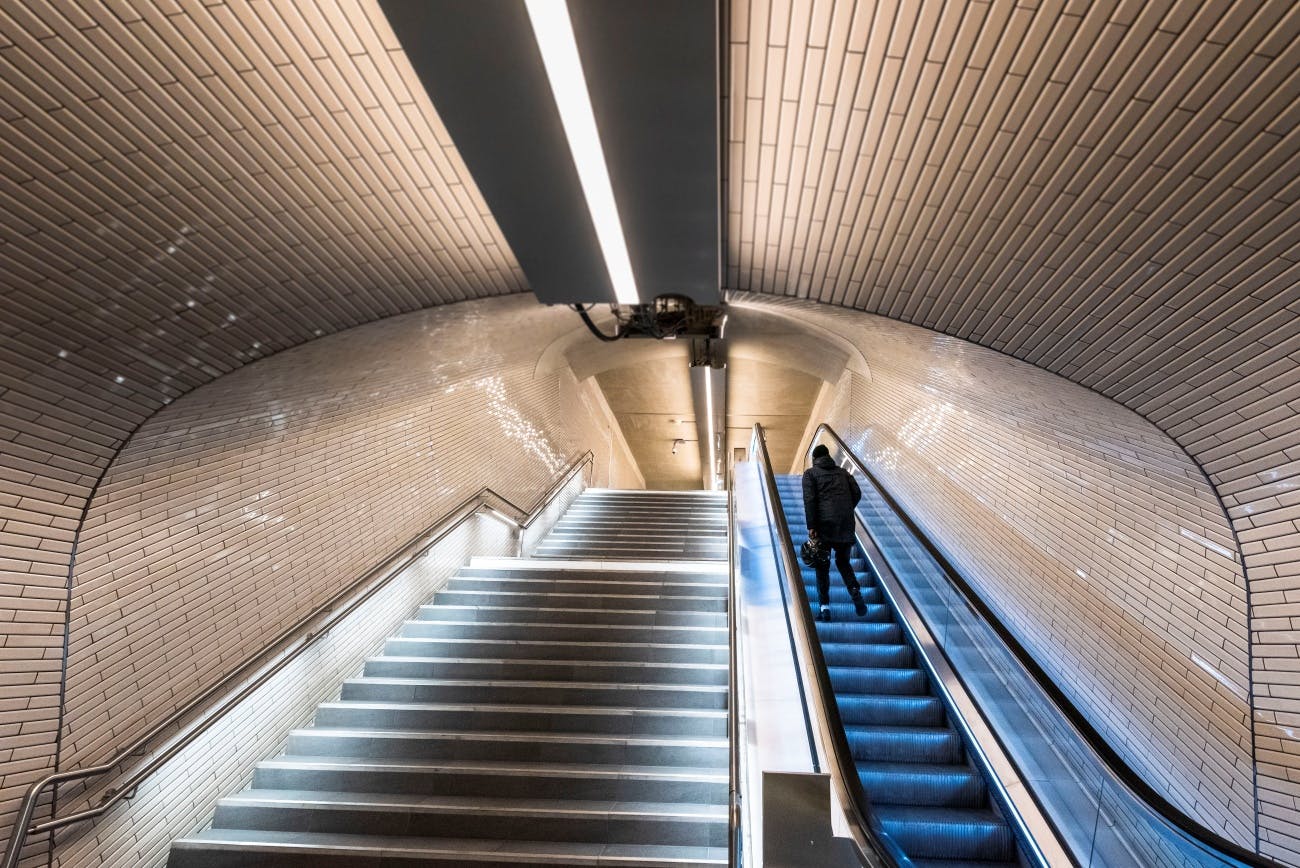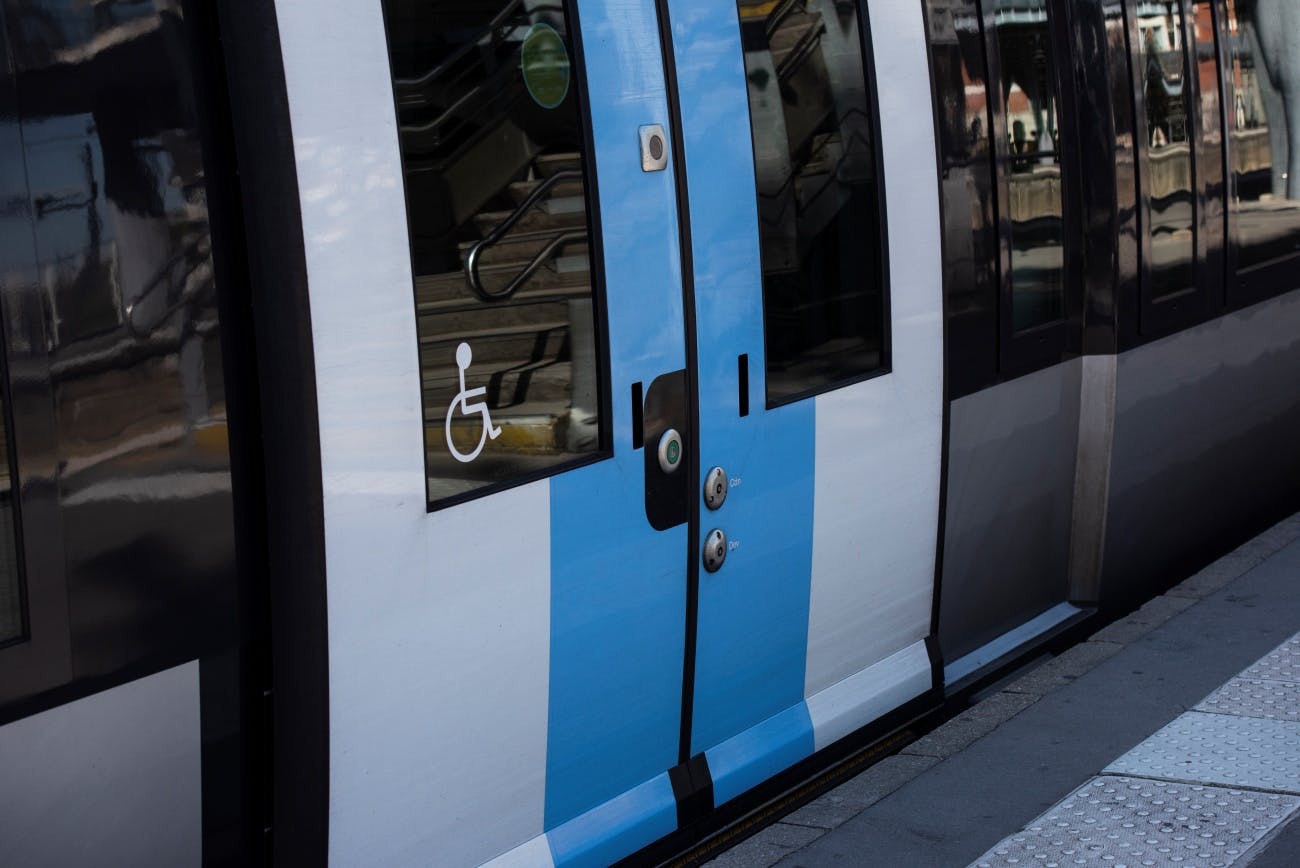
Key figures for accessibility on our network
Published on
Accessibility is a fundamental priority for Île-de-France Mobilités, which is dedicated to enhancing the accessibility of public transport every day. Since 2005, we have implemented a comprehensive network transformation policy in collaboration with associations, operators, local authorities, and the Île-de-France Region to enhance the comfort and accessibility for passengers with disabilities across the network. Explore the significant advancements in accessibility on our network through these figures and statistics.

Île-de-France Mobilités’ strategy in terms of accessibility
Since 11 February 2005*, French public transport has undergone the transformation required to make its network accessible to everyone.
Aware of the difficulties that passengers with disabilities, and in particular those travelling in wheelchairs, may experience in public transport, Île-de-France Mobilités drives a long-standing policy to make the Ile-de-France network ever more accessible. along with passenger groups, local authorities, the Île-de-France Region and operators.
*Introduction of the law “for equal rights and opportunities, participation and citizenship for people with disabilities”
The requirements of Île-de-France Mobilités in terms of accessibility
As part of its contracts with operators (the companies responsible for the operation, renovation and modernisation of the network), Île-de-France Mobilités enforces requirements in terms of quality of service and information for disabled people. These requirements cover:
- support for people with disabilities,
- their access to information,
- availability of equipment (lifts, stairs, bus access ramps)
- repair times for breakdowns.
The Accessibility Master Plan
Île-de-France Mobilités and its partners (SCNF and the Île-de-France Region) have invested 1.5 billion euros to carry out a work schedule to make the network accessible (Sd'Ap). It was set up in 2009.
This timetable, designed to take account of the needs and reality of the region, covers the four main aspects of accessible mobility:
- a road component (buses, coaches, stops and roads),
- a rail component (train, metro, tram, RER and stations),
- a passenger information section (ticketing and access to appropriate information)
- and a staff training component.
Here are the accessibility statistics for your network
Extensions and new projects will all be accessible!
Since 2005 all new construction projects for lines, stations, new buses, metros or trains along with extensions of existing lines are designed to be fully accessible!
Accessibility of bus routes
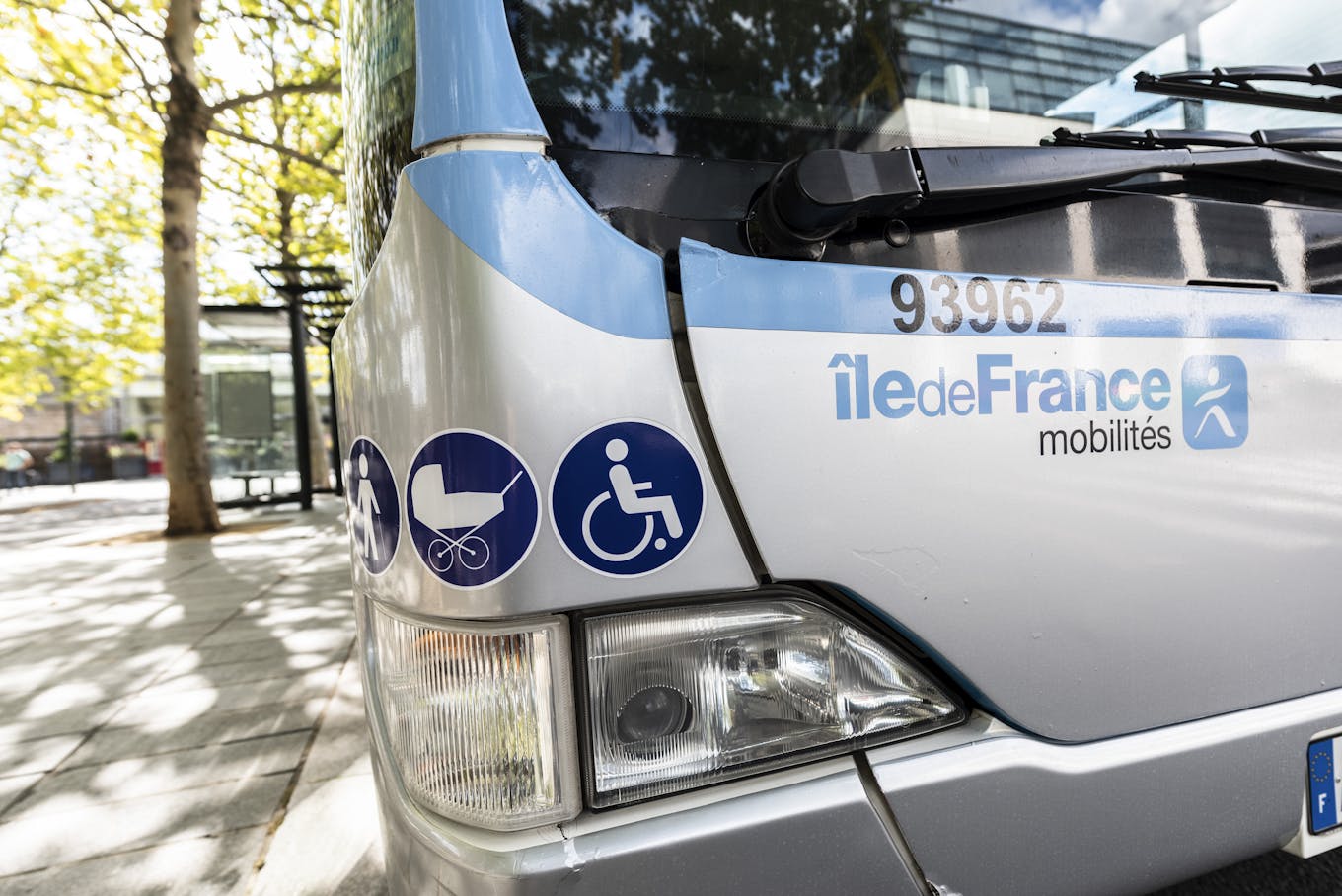
- 100% of Parisian bus routes are accessible to people with disabilities or reduced mobility (65 routes),
- 86% of the inner suburban bus network (296 routes) are accessible,
- Today, 15,400 bus stops (65%) are accessible out of the 23,600 considered priorities by the Sd'Ap ,
- In the inner and outer suburbs, 539 bus routes are accessible with a target to reach 900 routes,
- Routes on the T Zen project (1, 2, 3, 4, 5 and 6) are and will be fully accessible to people in wheelchairs to allow them to travel independently,
- 70% of the bus network will be equipped to provide internal and external announcements by 2024,
- 80% of the bus network will be equipped to provide internal and external visual announcements in 2024.
Why public transport accessibility needs so many to work together ?
Ensuring accessibility along a bus route makes no sense if the roads leading to the bus stops are not accessible. Île-de-France Mobilités collaborates closely with local authorities, the Île-de-France Region, and transport operators to establish a seamless and comprehensive travel chain.
Accessibility of metro lines
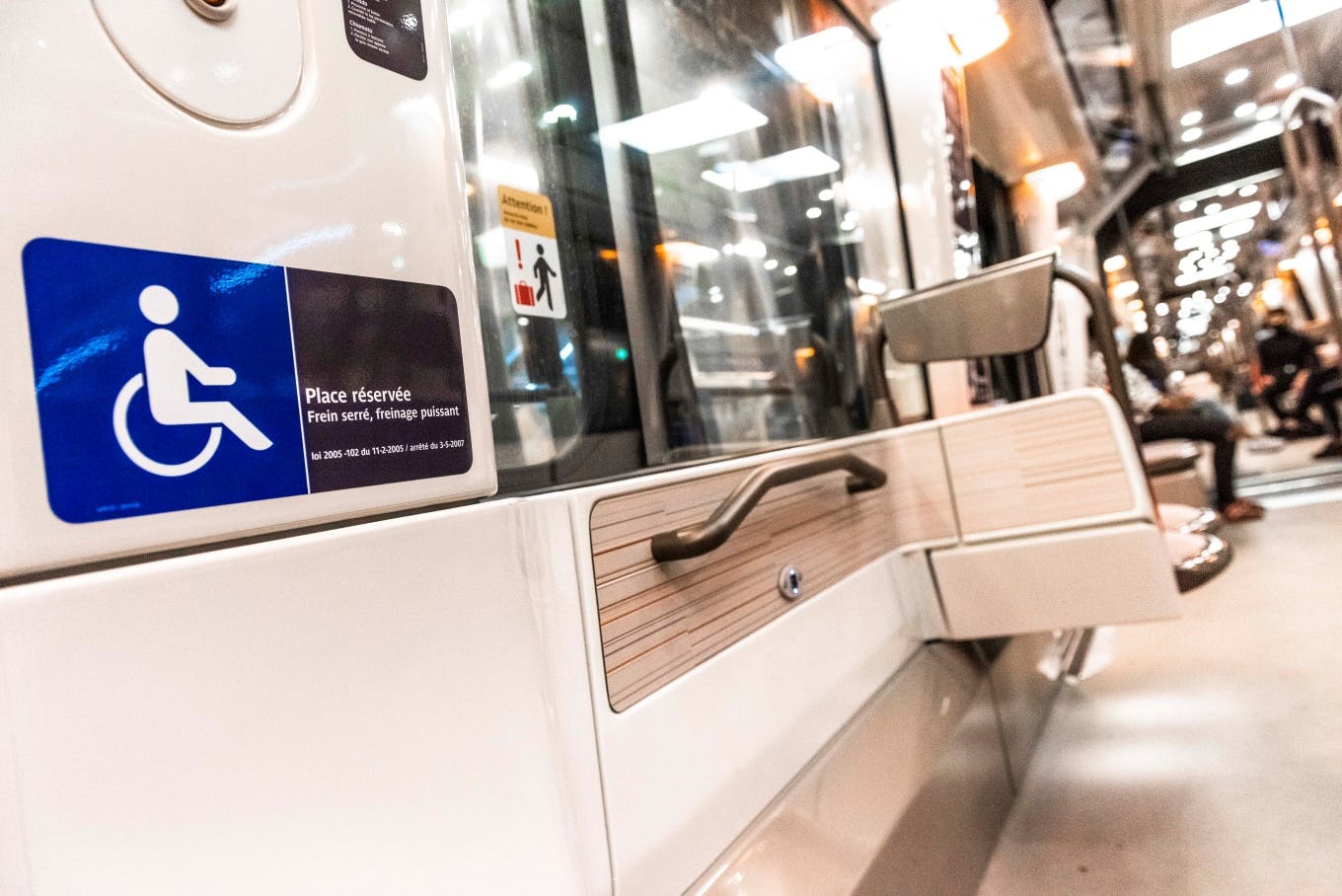
- Line 14 and future Lines 15, 16, 17 and 18 are the only lines to date that are fully accessible from one terminus to the other (including people in wheelchairs),
- With the extension of Lines 4, 11 and 14, by summer 2024, 29 metro stations will be accessible for independent travel,
- Metro lines not accessible to people in wheelchairs all have an alternative route by bus, RER or tram (routes available from the Plan my journey page on the Île-de-France Mobilités website).
- Ile-de-France metro lines are certified Equisens , S3A and Cap’Handéo for passengers with cognitive, psychological, hearing and visual disabilities,
- All new metro lines designed since 2005 as well as the extension of existing lines are, or will be, accessible.
Good to know!
All RATP and SNCF train and station staff are trained to operate accessibility equipment, in customer service and in looking after people with disabilities!
L’accessibilité des RER et des trains
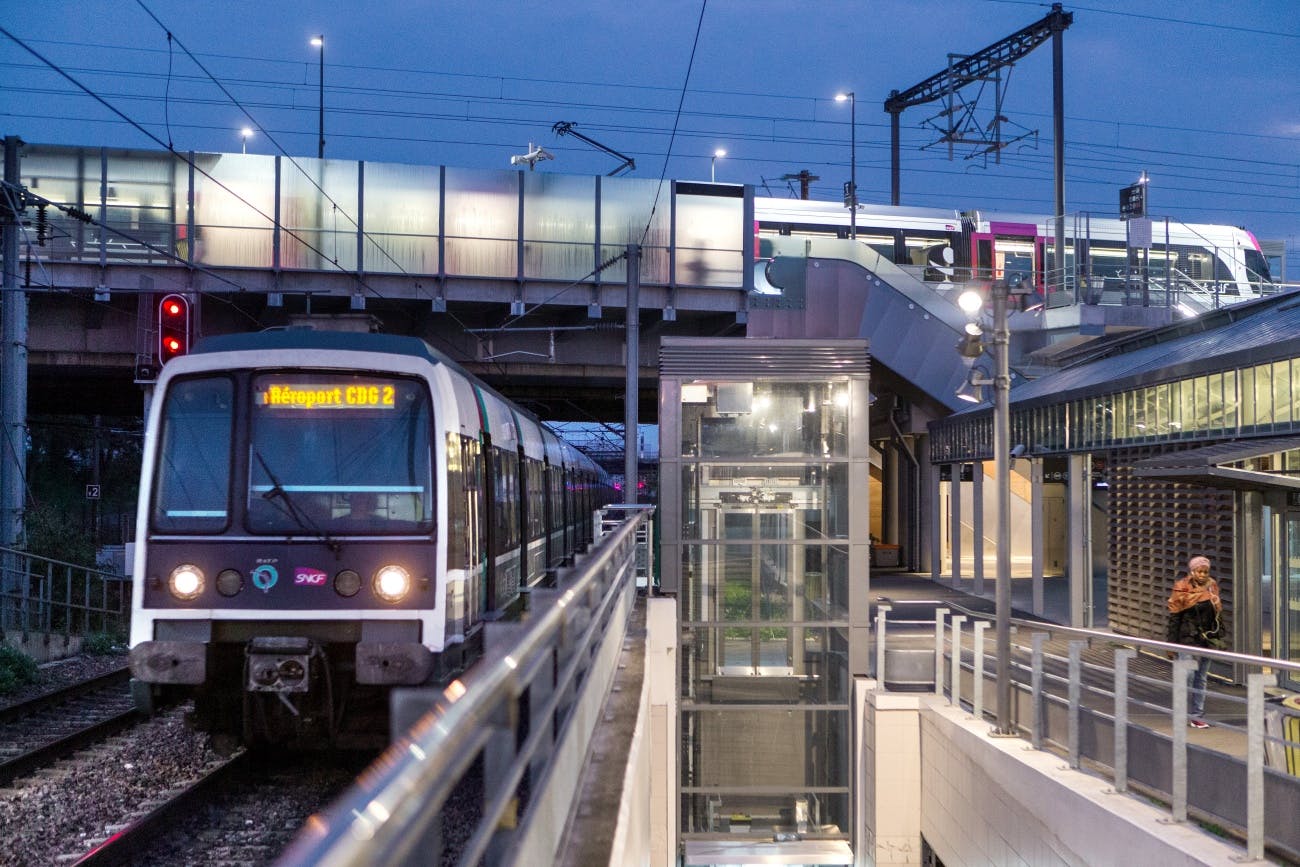
- All RER and train stations are certified Cap- Handéo for passengers with cognitive, psychological, hearing and visual disabilities,
- 100% of RER A and B stations are accessible (65 stations in total)!
- 97% of rolling stock will have both visual and audible announcements by 2024,
- Trains on Lines E, H, J, K, L and P are 100% accessible,
- Regio 2N trains are all equipped with an ARP*
- All train and RER lines have staff present at stations to assist passengers with disabilities so that they can use the network.
- By 2025, 268 accessible stations will cover 95% of passenger traffic.
- Regio 2N trains, which run on Lines N, R and D, are 100 % compliant with PMR TSIs (Technical Specifications for interoperability for people with reduced mobility),
- Anyone with a disability can use the Accès Plus Transilien service for their journey at any station on the network.
- Every month, two to three more stations are made accessible on the Île-de-France Mobilités network.
*ARP is a sound system to assist in obtaining information and locating doors for the visually impaired. Announcements are triggered by a universal remote control, the same one used to receive information at pedestrian crossings.
L’accessibilité à bord des tramways
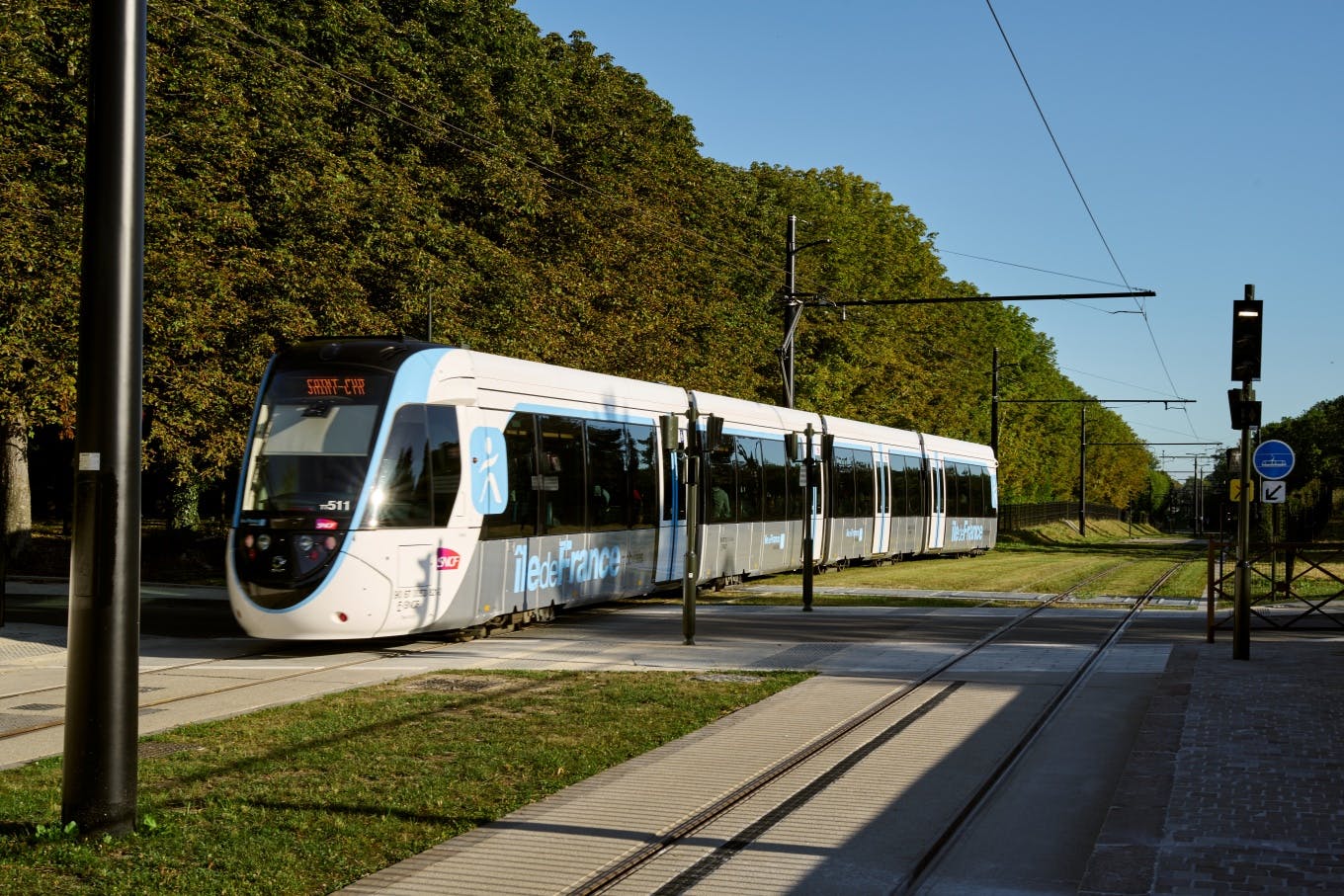
- 100% of tram routes are accessible,
- On the T8 tram line, a sign language information system and continuous visual information screens are installed.
- The T4 and T11 lines are Cap' Handéo certified for passengers with cognitive, psychological, hearing and visual disabilities,
- 100% of the lines where construction started after 2014 (T6, T8, T9, T11, T13 and T12 at the end of 2023) will be accessible to people with reduced mobility for independent travel.
Accessibilité numérique

Digital technology plays a vital role in modern mobility, and Île-de-France Mobilités recognizes its importance by integrating digital solutions into its efforts and investments. Alongside maintaining an accessible website and providing a trip planner that enables real-time access to accessible routes (via the Île-de-France Mobilités app and website), other digital initiatives have been implemented as:
Andilien: a free application to prepare your trip
Accès Plus Transilien , an assistance and information service for people with disabilities and reduced mobility, has its own free app called Andilien. It is available for download and connects the passenger to a Transilien SNCF member of staff (by call or text) in stations for information or assistance, and also to prepare their trip by consulting the map of each station, the level of accessibility or displaying suitable routes.
Découvrez nos cartes et nos plans adaptés !
Accessible mobility for everyone
Mobility in public transport is not just a question of travel. It's about creating new opportunities, discovering your region, seeing your loved ones, being independent or living your life to the full! For all these reasons, Île-de-France Mobilités has made it its mission to enable all passengers travel throughout Île-de-France, in the best possible conditions.
